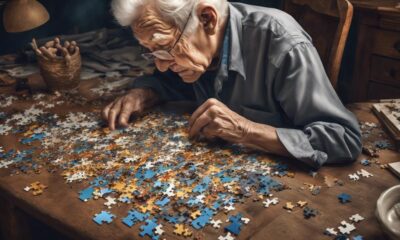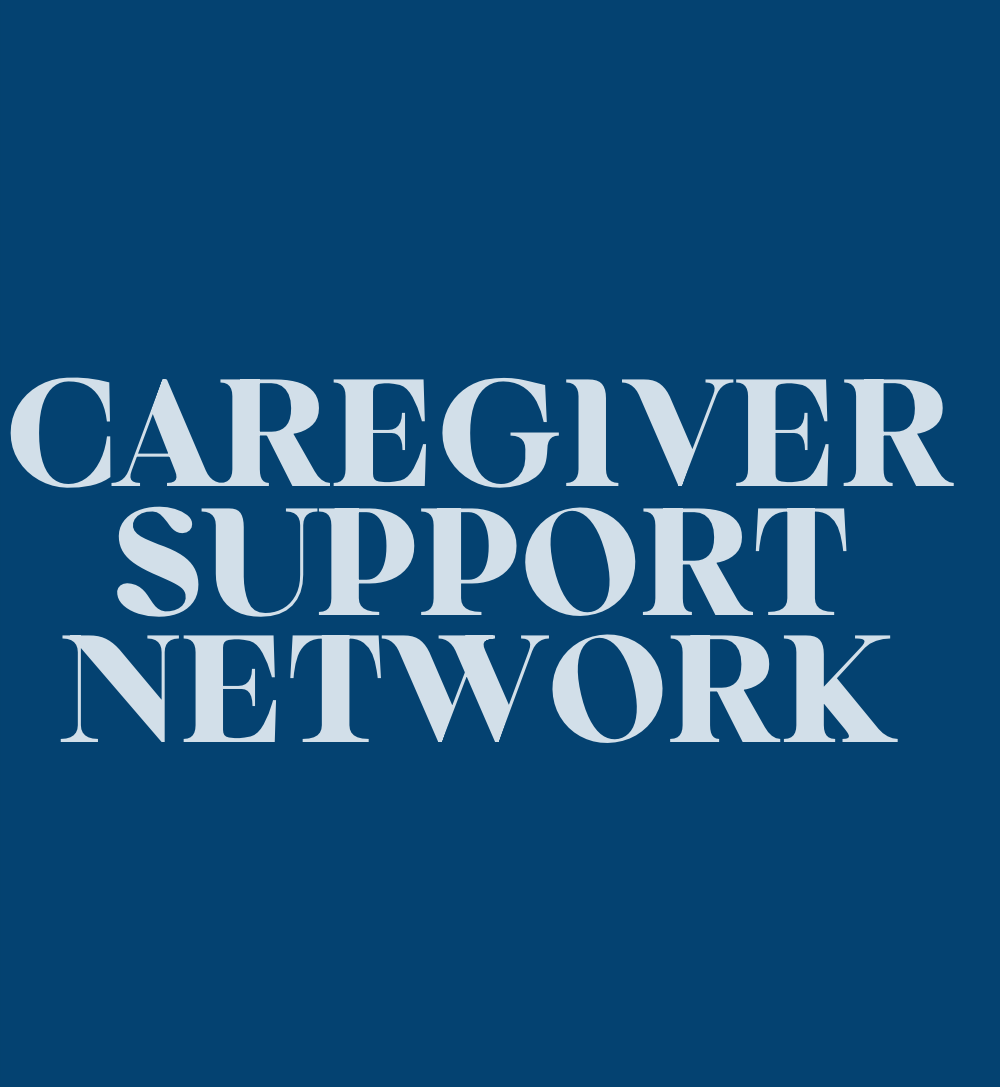Behavior Modification
How Fever Can Cause Hallucinations: Explained
Fever-induced hallucinations: A fascinating link between body temperature and illusions, raising questions that challenge conventional wisdom.

The phenomenon of fever-induced hallucinations, with their mysterious manifestations, has intrigued numerous individuals. Could it be that these misleading images are simply a consequence of our body’s elevated temperature? While some may dismiss this idea as just speculation, a deeper connection might still be uncovered.
Let's explore the science behind fever-induced hallucinations and unravel the complexities that lie within this intriguing phenomenon.
Key Takeaways
- Fever-induced hallucinations occur when the brain's functioning is impaired due to high body temperature.
- Fever-induced hallucinations typically do not require specific treatment.
- High fevers, especially when very high, are the primary risk factor for fever-induced hallucinations.
- Resolving the underlying illness causing the fever is crucial in treating fever-induced hallucinations.
The Science Behind Fever Hallucinations
Fever hallucinations, also known as delirium, arise from the brain's impaired functioning due to high body temperature. When the body experiences a fever, the elevated temperature can disrupt the normal processes of the brain, leading to hallucinations. Individuals may see, hear, or even smell things that aren't actually present. These hallucinations are a direct result of the fever and typically don't require specific treatment.
If someone is experiencing fever hallucinations, it's essential to address the underlying cause by reducing the fever. Over-the-counter medications like ibuprofen can help lower the body temperature. However, if the hallucinations persist or are accompanied by other concerning symptoms, it's crucial to seek medical care. A healthcare provider can offer a proper diagnosis or treatment plan tailored to the individual's needs.
Monitoring the fever and staying hydrated are also important aspects of managing fever hallucinations. Remember, seeking professional medical advice is key to ensuring the well-being of those experiencing fever-related hallucinations.
Common Types of Fever-Induced Hallucinations

In cases of fever-induced hallucinations, various sensory experiences can manifest due to the brain's impaired functioning at elevated body temperatures. These hallucinations can be distressing and confusing, impacting individuals experiencing them.
Here are common types of fever-induced hallucinations:
- Visual Hallucinations: Seeing things that aren't actually present, such as shadows, lights, or objects.
- Auditory Hallucinations: Hearing things like voices, music, or sounds that don't exist in reality.
- Olfactory Hallucinations: Smelling odors that aren't there, which can range from pleasant to foul scents.
- Tactile Hallucinations: Feeling sensations on the skin, such as tingling, crawling, or pressure, without any external cause.
If fever hallucinations are accompanied by severe symptoms like seizures or chest pain, it's crucial to seek immediate medical attention. Hydration and managing the fever with appropriate medications like acetaminophen or ibuprofen can help alleviate fever-induced hallucinations.
Risk Factors for Fever-Related Hallucinations
Identifying potential risk factors for fever-induced hallucinations involves understanding various factors that can contribute to the development of these sensory disturbances. High fevers, especially when the fever is very high, are the primary risk factor for experiencing fever-induced hallucinations. Such hallucinations happen because the elevated body temperature affects the brain's normal functioning, leading to sensory disturbances like seeing or hearing things that aren't present.
It's crucial to note that fever-induced hallucinations are more common in children, particularly when they're experiencing serious infections. Parents may become alarmed when seeing their child in such distress, hearing sounds, or seeing their child react to unseen stimuli. In most cases, fever-induced hallucinations are short-lived and don't require specific treatment. However, managing the fever with appropriate medications like acetaminophen (Tylenol) or ibuprofen (Advil) can help alleviate the symptoms and prevent further complications.
If the fever is very high or persists, seeking medical attention is advisable to address any underlying issues that may be causing the hallucinations.
Treatment Options for Fever-Triggered Hallucinations

Understanding potential risk factors for fever-induced hallucinations is crucial, and addressing the underlying illness causing the fever is key in resolving hallucinations triggered by elevated body temperature.
When it comes to treating fever-triggered hallucinations, several options can help alleviate symptoms and promote recovery:
- Treating Underlying Illness: Resolving the root cause of the fever is essential to managing fever-induced hallucinations effectively.
- Over-the-Counter Remedies: Medications like acetaminophen and ibuprofen can help lower fever and reduce hallucinations.
- Hydration: Staying hydrated by consuming plenty of fluids is vital during febrile episodes to aid in managing hallucinations.
- Temperature Management: Using cold compresses or taking lukewarm baths can provide comfort, lower body temperature, and potentially reduce hallucinations.
If fever-induced hallucinations persist or worsen despite these measures or are accompanied by other concerning symptoms, seeking medical attention promptly is advisable.
When to Seek Medical Help for Fever Hallucinations
Recognizing the urgency of seeking medical assistance for fever-induced hallucinations is crucial for ensuring prompt evaluation and appropriate intervention. When it comes to fever hallucinations, especially in children, seeking medical help is essential to rule out serious underlying conditions such as delirium or infections. If you, your child, or a loved one experience fever-induced hallucinations, it is important not to delay in reaching out for medical assistance. Here is a guide to help you understand when to seek medical help for fever hallucinations:
| When to Seek Medical Help for Fever Hallucinations | Action |
|---|---|
| Young child experiencing first fever hallucinations | Seek a doctor's advice |
| Fever hallucinations accompanied by severe confusion or delirium | Seek immediate medical attention |
| Parents feeling scared or unsure about the situation | Contact a healthcare provider for guidance |
| Persistent fever hallucinations despite home remedies | Schedule a visit with a healthcare professional |
Frequently Asked Questions
Why Does a Fever Cause Hallucinations?
Fever causes hallucinations by elevating the body's temperature, which in turn impairs normal brain functioning. This impairment can lead to sensory experiences like seeing, hearing, or even smelling things that aren't real.
These hallucinations, often brief and mild, are a result of the body's response to the high fever. Proper rest and hydration are typically enough to help the body recover from these fever-induced hallucinations without the need for medical intervention.
Can the Flu Make You Hallucinate?
When the flu strikes, it can indeed lead to hallucinations in children. These fever-induced experiences can be alarming, like hearing loud noises or seeing distorted objects.
It's crucial to monitor hydration levels closely during such episodes as kids may seem very ill. While fever hallucinations are generally not harmful, seeking medical advice is wise in severe cases.
What Kind of Infection Can Cause Hallucinations?
Infections like meningitis, encephalitis, and other brain-related conditions can lead to hallucinations. These infections can disrupt brain function, causing individuals to experience sensory perceptions that aren't real.
It's crucial to seek medical attention if you or a loved one exhibit hallucinations, as they can be a sign of a serious underlying health issue. Proper diagnosis and treatment are essential in managing these conditions effectively.
What Is Fever Delirium?
Fever delirium is a transient state of confusion caused by high body temperature. It can lead to hallucinations involving various sensory experiences like seeing, hearing, or smelling things that aren't real. These episodes are typically short-lived and usually resolve on their own without specific treatment.
We must monitor individuals experiencing fever delirium closely to ensure their safety and comfort during these episodes.
Conclusion
In conclusion, fever hallucinations can be a strange and unsettling experience, but they're typically harmless and don't require treatment. By staying hydrated, managing fever, and seeking medical help if necessary, individuals can navigate through these brief episodes with ease.
Remember, while fever-induced hallucinations may be alarming, they're a natural response of the body and can be managed effectively with proper care and attention.
Stay informed and stay healthy.
Behavior Modification
7 Best Ways to Disrupt Sundowning Behavior
A structured routine reduces sundowning in dementia patients – but what other effective strategies exist to tackle this challenging behavior?

A new study focusing on a senior with dementia found that implementing a structured routine significantly decreased the occurrence of their sundowning episodes. It’s crucial to recognize the importance of consistency and predictability in managing behaviors linked to sundowning.
However, there are various other effective strategies that caregivers and healthcare professionals can explore to address this challenging issue. By delving deeper into the triggers and environment that may contribute to sundowning, we can uncover more ways to disrupt this behavior and improve the quality of life for individuals experiencing these symptoms.
Key Takeaways
- Establish consistent routines to minimize sundowning triggers.
- Create a calming environment with soft lighting and familiar objects.
- Utilize therapeutic interventions like cognitive-behavioral therapy and relaxing activities.
- Collaborate with healthcare professionals to implement medication strategies and non-pharmacological treatments.
Recognizing Sundowning Triggers
Recognizing sundowning triggers involves identifying factors that can lead to increased confusion, agitation, or restlessness in individuals during the late afternoon and evening hours. For our loved ones experiencing sundowning, it's crucial to be aware of potential triggers such as disrupted sleep patterns, overstimulation, changes in routine or environment, hunger, thirst, medication side effects, or even underlying medical conditions like urinary tract infections.
These triggers can exacerbate symptoms of Alzheimer's, dementia, or sundowner's syndrome, making evenings particularly challenging.
Through our experiences with individuals who encounter sundowning behaviors, we've learned that even subtle changes in the environment or routine can have a significant impact on their well-being. By paying attention to these triggers and proactively addressing them, we can help reduce the intensity of symptoms and improve the overall quality of life for our loved ones.
It's essential to approach this with patience, compassion, and a willingness to adapt to their needs as they navigate the complexities of sundowning.
Establishing Consistent Routines

Establishing consistent routines is key in managing sundowning behaviors effectively, promoting a sense of stability and comfort for individuals experiencing late-day challenges. When caring for loved ones exhibiting symptoms of sundowning, here are some practical steps to help ease their late-day confusion:
- Follow a Daily Schedule: Minimize surprises by sticking to a predictable routine, reducing anxiety and confusion.
- Engage in Structured Activities Earlier: Encourage regular exercise earlier in the day to promote better sleep patterns.
- Set a Regular Sleep Routine: Ensure your loved ones get enough rest by establishing consistent bedtime habits.
- Create a Calm Environment: Dim lights, reduce noise, and declutter in the late afternoon to provide a soothing atmosphere for the evening.
Creating a Calming Environment
As we focus on fostering a soothing environment for individuals struggling with sundowning behaviors, prioritizing elements like soft lighting and minimal distractions becomes essential for their comfort and well-being.
People with dementia often experience increased anxiety and confusion during the late afternoon and evening, making it crucial to create a calming environment to support them and their loved ones. By utilizing soft, gentle lighting in the evening, minimizing noise, and reducing overstimulation, we can help alleviate some of the distress associated with sundowning. Additionally, playing soothing music or calming sounds can further promote relaxation and a sense of peace.
It is important to keep the environment familiar and comfortable, incorporating familiar objects and scents to provide reassurance and a feeling of security. Establishing a consistent and predictable routine for bedtime, meals, and activities can also contribute to a sense of stability.
Utilizing Therapeutic Interventions

To effectively manage and alleviate sundowning behaviors in individuals with dementia, incorporating therapeutic interventions into their daily routine is vital. These interventions can help disrupt the symptoms of sundowning, providing comfort and support to our loved ones with Alzheimer's disease.
Here are four key ways therapeutic interventions can help:
- Implementing Consistent Daily Routine: Establishing a structured schedule can prevent confusion and anxiety, promoting a sense of security and stability for individuals experiencing sundowning.
- Engaging in Relaxing Activities: Encouraging activities like listening to soothing music or gentle exercises can help calm agitation and reduce stress levels during the evening hours.
- Creating a Familiar Environment: Surrounding our loved ones with familiar objects and photos can create a comforting atmosphere, easing their transition into the night-time hours.
- Exploring Therapeutic Options: Collaborating with healthcare professionals to consider cognitive-behavioral therapy or reminiscence therapy can address emotional needs and provide additional support for managing sundowning behaviors effectively.
Implementing Medication Strategies
When addressing sundowning behavior in individuals with dementia, consulting with a healthcare professional specializing in dementia care is crucial to explore effective medication strategies. Medications such as antidepressants, antianxiety medications, antipsychotics (used cautiously due to stroke risks), and melatonin for sleep can be considered to manage sundowning symptoms.
It's important to regularly monitor and assess the effectiveness of these medications, adjusting dosages or trying different medications if needed. Before turning to medication, non-pharmacological treatments like light therapy and music therapy should be explored.
Collaborate closely with healthcare professionals to create a comprehensive treatment plan that includes both medication and non-medication strategies to address sundowning behavior. By following the prescribed medication schedule diligently and communicating any changes or side effects to the healthcare provider, we can better support our loved ones with dementia in managing anxiety, confusion, and prevent disruptive symptoms effectively.
Frequently Asked Questions
What Are the Activities for Sundowners Syndrome?
Activities for sundowners syndrome can include:
- Engaging in calming activities like listening to music
- Gentle stretching
- Social interactions
Creating a comfortable environment with:
- Familiar objects
- Adequate lighting
Encouraging:
- Regular physical activity during the day
- Establishing a bedtime routine with relaxation techniques
Addressing disrupted sleep patterns and overstimulation is important to support individuals experiencing sundowning behavior.
What Triggers Sundowning?
When sundowning strikes, triggers like disrupted sleep, overstimulation, and hunger can fuel its intensity. These factors can amplify confusion and restlessness as the day winds down.
Imagine a storm brewing within, ready to unleash its power. Understanding these triggers is key to managing sundowning episodes effectively.
What Is the Best Mood Stabilizer for Dementia Patients?
When looking at the best mood stabilizer for dementia patients, it's essential to consider individual needs and medication responses. Common options like risperidone and quetiapine are often prescribed, but the ideal choice can vary.
Consulting healthcare providers for tailored recommendations and careful monitoring of potential side effects are crucial.
Combining medication with non-pharmacological strategies, such as maintaining routines and creating a peaceful environment, can enhance overall management of sundowning behaviors in dementia patients.
What Stage of Dementia Does Sundowning Start?
Sundowning behavior typically begins in the middle to later stages of dementia. It commonly emerges in the late afternoon or evening hours. Various triggers, such as disruptions in the body's internal clock, hunger, infections, boredom, pain, or depression, can exacerbate this behavior.
Understanding the onset of sundowning can help caregivers anticipate and manage its effects more effectively. It's essential to establish routines and create a calming environment to support individuals experiencing this phenomenon.
Conclusion
In the journey of disrupting sundowning behavior, we've learned to dance with the triggers and embrace the routines. We understand that certain triggers can worsen sundowning symptoms, so we work to identify and avoid them when possible. By embracing and maintaining familiar routines, we provide a sense of security and stability for our loved ones.
Creating a soothing environment is also a crucial aspect of managing sundowning behavior. We carefully curate the physical space, ensuring it is calming and comforting. Soft lighting, soothing colors, and familiar objects can all contribute to a sense of peace and relaxation.
In addition to these environmental strategies, therapeutic interventions and medication strategies are important tools in our toolkit. Therapeutic interventions such as cognitive-behavioral therapy or music therapy can help reduce anxiety and agitation associated with sundowning. Medications, prescribed under the guidance of medical professionals, can also be used to manage symptoms when necessary.
With these various strategies at our disposal, we navigate the twists and turns of sundowning with grace. Like a symphony conductor guiding the orchestra, we harmonize the elements to create a peaceful melody for our loved ones. By working together and implementing these strategies, we can find solace in the midst of chaos and bring light to the darkness of sundowning.
Behavior Modification
10 Essential Dementia Behavior Training Tips for Caregivers
Intrigued by the transformative power of dementia behavior training, caregivers unravel the complexities of caring for loved ones with dementia.

In the intricate journey of dementia care, the role of a caregiver becomes a guiding light through unknown paths.
Each twist and turn presents new challenges to navigate, and understanding the behaviors associated with dementia is akin to deciphering an intricate code.
However, armed with the right tools and insights, caregivers can transform these perplexing behaviors into opportunities for connection and support.
In this discussion, we explore the invaluable impact of dementia behavior training on caregivers and those under their care, shedding light on effective strategies to enhance the quality of life for all involved.
Key Takeaways
- Dementia behaviors are a form of communication and can be understood through caregiver training.
- Effective communication strategies include non-verbal cues, simple language, and validation of emotions.
- Agitation and aggression can be managed through maintaining a calm demeanor and creating a structured environment.
- Creating a calming environment with reduced noise, familiar objects, and a consistent routine is important.
Understanding Dementia Behaviors
In understanding dementia behaviors, we observe a spectrum of responses that individuals exhibit as their cognitive abilities change. Caregiver Training equips us with the knowledge and skills necessary to navigate these behaviors effectively.
Individuals with dementia may display a range of actions such as confusion, agitation, wandering, or aggression. It's crucial for caregivers to recognize that these behaviors are often a form of communication in response to unmet needs or distress. By identifying triggers through Caregiver Training, we can better understand the root causes behind these actions.
Communication becomes paramount in managing dementia behaviors. Through techniques taught in Caregiver Training, we learn to use non-verbal cues, maintain patience, and show empathy towards individuals with dementia.
Creating a safe environment is also essential, as modifications can promote a sense of security and reduce confusion. Additionally, self-care for caregivers is emphasized to manage stress and ensure well-being while providing quality care.
Understanding dementia behaviors is a fundamental aspect of effective caregiving, and through proper training, we can enhance our ability to support individuals with dementia compassionately.
Effective Communication Strategies

Navigating the realm of dementia behaviors, particularly in understanding the spectrum of responses individuals exhibit, underscores the significance of employing effective communication strategies. When interacting with individuals with Alzheimer's and dementia, using non-verbal cues like eye contact and gentle touch can enhance the quality of communication. Speaking slowly and clearly, using simple language and short sentences, can help improve understanding and reduce confusion.
It is crucial to validate the emotions and feelings of individuals with Alzheimer's and dementia, even when the conversation's content may be unclear. This validation shows empathy and support, fostering a more trusting and comforting environment. Visual aids such as pictures or gestures can assist individuals in expressing themselves and understanding the communication better.
Creating a calm and quiet setting, free from distractions, is essential for promoting effective communication with individuals experiencing Alzheimer's and dementia. By implementing these strategies, caregivers can enhance their interactions, improve understanding, and provide better support for those under their care.
Managing Agitation and Aggression
Recognizing the signs of agitation and aggression in individuals with dementia is essential for effective management and support. Agitation and aggression are common behavioral symptoms in Alzheimer's disease and other forms of dementia. These behaviors can be triggered by various factors such as confusion, frustration, or discomfort. As caregivers, it's crucial to understand these triggers to prevent escalation.
Techniques for de-escalating agitated behaviors include maintaining a calm demeanor, speaking in a soothing tone, and providing reassurance. Creating a structured and familiar environment can also help reduce instances of agitation and aggression.
When faced with challenging behaviors, seeking support from healthcare professionals or dementia support groups is advisable. They can offer guidance on personalized strategies to manage specific situations. Additionally, caregivers should prioritize their well-being by taking breaks when needed and practicing self-care.
Creating a Calming Environment

Understanding the impact of a calming environment on managing agitation and aggression in individuals with Alzheimer's is crucial for caregivers. Creating a serene physical space can significantly influence the emotional well-being of those with Alzheimer's. By reducing noise and clutter, using soft lighting, and incorporating calming colors, caregivers can establish a peaceful atmosphere that promotes relaxation. Including familiar objects and photos in the environment can evoke a sense of security and recognition, helping individuals feel more comfortable and at ease. Additionally, maintaining a consistent daily routine offers structure and predictability, which can reduce anxiety and confusion in individuals with Alzheimer's.
Caregivers can further enhance the calming environment by engaging in soothing activities such as playing calming music, providing gentle touch, or utilizing aromatherapy. These activities can help individuals with Alzheimer's relax and feel more connected to their surroundings. By creating a tranquil and comforting space, caregivers can positively impact the emotional well-being of those under their care.
Self-Care Tips for Caregivers
To maintain overall well-being while caring for individuals with dementia, caregivers must prioritize self-care through rest, social support, enjoyable activities, stress management techniques, and recognizing signs of burnout. Taking care of oneself is vital to being able to provide the best possible care for others. Here are some self-care tips for caregivers:
| Self-Care Tips | Description |
|---|---|
| Set Aside Time for Rest and Relaxation | Ensure you get enough sleep and take breaks to recharge. |
| Seek Support | Connect with friends, family, or support groups to combat feelings of isolation. |
| Engage in Enjoyable Activities | Participate in hobbies or activities that bring joy and fulfillment. |
Frequently Asked Questions
How Should Caregivers Deal With Dementia Patients?
When dealing with dementia patients, we approach them with patience, understanding, and empathy. Clear and simple communication techniques help us effectively interact with them.
Creating a calm and structured environment reduces confusion and agitation. Distraction and redirection techniques help manage challenging behaviors.
Seeking support and respite care is crucial to prevent caregiver burnout. It's essential to prioritize the well-being of both the patient and the caregiver in these situations.
What Are 3 Things to Never Do With Your Loved One With Dementia?
When caring for a loved one with dementia, it's crucial to avoid arguing, correcting, or pressuring them. These actions can lead to increased agitation, confusion, and anxiety for our loved ones.
Instead, we should approach them with patience, understanding, and compassion. Remember, their behaviors are a result of the disease, not a reflection of their true feelings.
How Do You Deal With Dementia Behavior?
Dealing with dementia behavior can be challenging, but it's important to stay calm and patient. Using non-verbal cues like gentle touch can help communicate effectively.
Creating a safe environment by removing triggers is key. Remember to practice self-care to reduce stress.
Seeking support from caregiver groups and organizations can provide valuable resources. It's crucial to approach dementia behaviors with compassion and understanding for the well-being of both the caregiver and the individual with dementia.
What Are Two Common Issues That Affect Family Caregivers of Someone With Dementia?
Dealing with dementia as caregivers, we often grapple with the emotional toll and physical exhaustion that can come with the responsibility.
Additionally, role reversal presents challenges as we adjust to caring for our loved ones.
Communication difficulties can also arise, making it harder to connect with those with dementia.
These issues can lead to social isolation and impact our well-being, highlighting the importance of support and strategies to navigate these obstacles effectively.
Conclusion
In conclusion, we've learned that dementia behavior training for the caregiver is essential in providing effective care for individuals with dementia.
By understanding the behaviors associated with dementia, implementing communication strategies, managing agitation and aggression, creating a calming environment, and practicing self-care, caregivers can improve the quality of life for both themselves and their loved ones.
It's ironic that by taking care of others, we also take care of ourselves.
Behavior Modification
5 Nurturing Engagement Activity Ideas for Dementia Patients in Early Stages
Delve into a world of innovative activities for dementia patients in early stages, unlocking the keys to meaningful connections and joy.

In our quest to nurture engagement among individuals in the early stages of dementia, we’ve found it akin to tending to a delicate garden, requiring gentle care and thoughtful nurturing.
A mere glimpse at the varied activities available might just be the beginning of a transformative exploration into the realm of fostering meaningful connections and joy in those we care for.
Key Takeaways
- Shopping as a therapeutic activity improves cognitive function and overall well-being.
- Leveraging technology for engagement provides cognitive stimulation and connection.
- Sensory and stimulating activities like pet therapy and memory boxes stimulate the senses.
- Involvement in household tasks maintains cognitive function and promotes engagement.
Shopping as Therapeutic Activity
Engaging in shopping as a therapeutic activity can spark joy and foster a sense of connection for individuals in the early stages of dementia. Activities like shopping help improve cognitive function, memory recall, and overall well-being. For individuals in our care, these outings not only provide a purposeful and fulfilling experience but also create opportunities for social interaction with loved ones and the community.
As we assist people with dementia during shopping trips, we witness firsthand the positive impact it has on their mood and mental acuity. Choosing familiar stores or farmers markets can evoke pleasant memories and emotions, enhancing the overall experience. By integrating shopping into their routine, we offer structure and familiarity, which are essential for individuals grappling with cognitive challenges.
Shopping not only serves as a practical way to procure goods but also provides sensory stimulation through various products. The sights, sounds, and textures encountered during shopping excursions can be invigorating and engaging, contributing to a holistic approach to dementia care.
Leveraging Technology for Engagement

In our approach to dementia care, we embrace the transformative power of technology to enhance engagement and cognitive well-being for individuals in the early stages of the condition. Leveraging technology can be a game-changer in providing stimulating activities for elderly relatives or dementia patients.
Here are some creative ways to integrate technology for engagement:
- Interactive Games and Puzzles: Use tablets or smartphones for mental nourishment with interactive games.
- Virtual Reality Experiences: Explore VR for cognitive stimulation and engagement.
- Online Communities: Engage in social media and online communities for connection.
- Digital Memory Books: Utilize digital albums for reminiscence and memory recall.
- Live Cams and VR Tours: Visit zoos, aquariums, and museums virtually to spark memories and reduce aggression.
Sensory and Stimulating Activities
As we journey further into exploring ways to enhance the well-being of individuals in the early stages of dementia, our focus now shifts towards the realm of sensory and stimulating activities. Engaging in sensory activities such as pet therapy, hand massages, and sensory gardens can provide comfort and stimulate the senses, offering a soothing and enriching experience. Stimulating the mind with activities like jigsaw puzzles and board games not only fosters cognitive function but also creates opportunities for social interaction, which is vital for emotional well-being.
Creating a memory box filled with items that evoke emotional memories and engaging in sensory activities can help individuals with dementia connect to their past and stimulate their cognitive abilities. Involving them in everyday tasks like folding laundry or preparing holiday desserts can provide a sense of purpose and accomplishment, contributing to an improved quality of life.
Household Task Involvement

With a focus on enhancing the sense of purpose and accomplishment for individuals in the early stages of dementia, involving them in familiar household tasks can be a meaningful and empowering experience. Here are some ways in which household task involvement can improve your loved ones' well-being:
- Engaging dementia patients in tasks like folding laundry or setting the table not only helps maintain cognitive function and motor skills but also provides a sense of accomplishment.
- By adapting tasks to the individual's abilities and offering clear instructions, you can promote a sense of independence and self-worth in your loved one.
- Involving dementia patients in household chores can also enhance communication and social interaction, fostering a sense of connection and belonging.
- Providing opportunities for caring for a large fish tank can offer a calming and soothing experience, benefiting both their physical and emotional well-being.
- Helping individuals with dementia in daily life activities ensures a manageable routine, promotes engagement, and may help slow cognitive decline in older adults.
Role of Family Caregivers
Engaging individuals in familiar household tasks not only enhances their sense of purpose and accomplishment but also highlights the crucial role that family caregivers play in supporting early-stage dementia patients. Family caregivers are essential in providing care, support, and assistance to loved ones with dementia. They manage daily activities like personal care, medication, and meals, ensuring the well-being of the person with dementia. Additionally, family caregivers offer emotional support and companionship, creating a sense of security for their loved one. They act as advocates, ensuring needs are met and coordinating healthcare services. Engaging in activities such as reminiscing, music therapy, and brain games helps stimulate cognitive function and enhance the quality of life for those with dementia. Here is a table summarizing the vital role of family caregivers in the progression of dementia:
| Role of Family Caregivers |
|---|
| Provide care and support |
| Manage daily activities |
| Offer emotional support |
| Act as advocates |
| Engage in stimulating activities |
Frequently Asked Questions
How Do You Engage Dementia Patients in Activities?
Engaging dementia patients in activities involves fostering connections, stimulating their minds, and promoting overall well-being.
We prioritize tailored activities that resonate with their interests and abilities, encouraging social interactions and cognitive exercises.
By incorporating creativity, routine, and sensory experiences, we strive to create a nurturing environment that enhances their quality of life.
Our approach focuses on compassion, understanding, and dedication to enriching the lives of those we care for.
What Can You Do for Early Onset Dementia?
For early onset dementia, we can offer various activities to promote well-being.
Engage in regular exercise for physical and mental health.
Provide social opportunities to prevent isolation.
Encourage hobbies and creative pursuits for cognitive stimulation.
Engage in memory games for mental sharpness.
Offer sensory experiences for emotional connection.
Tai Chi can improve cognitive function.
Establish daily routines for stability.
Activities like music, art, and brain games can be beneficial.
Outdoor activities like gardening and walking can have positive effects.
What Are Meaningful Engagement Activities for Dementia Patients?
When it comes to meaningful engagement activities for dementia patients, we prioritize cognitive stimulation, socializing, hobbies, and sensory experiences.
How can we best support their well-being?
Through technology, community resources, sensory activities, household tasks, and family involvement, we aim to enhance their quality of life and sense of purpose.
Let's focus on creating fulfilling moments and fostering connections that bring joy and stimulation to their daily lives.
What Activities Are Good for Early Dementia?
When working with individuals in early stages of dementia, we prioritize activities that promote physical and mental well-being, social connections, hobbies, cognitive stimulation, and sensory experiences.
Engaging in exercises like tai chi, maintaining daily routines, and incorporating familiar activities can all contribute to enhancing cognitive function and overall well-being in those with early dementia.
Other activities such as enjoying music and art projects, playing brain games, gardening, and utilizing community resources can also provide cognitive stimulation and social connections.
Conclusion
As we journey through the early stages of dementia with our loved ones, let's remember that 'a picture is worth a thousand words.'
By embracing activities that promote engagement and connection, such as shopping, technology use, sensory experiences, and household tasks, we can create meaningful moments together.
With the support of family caregivers, we can navigate this challenging time with love, compassion, and a focus on fostering joy and purpose in each day.
-

 Dementia Care2 weeks ago
Dementia Care2 weeks agoHow Gabapentin Affects Dementia: A Comprehensive Guide
-

 Dementia Care2 months ago
Dementia Care2 months agoUnderstanding the Stages of Vascular Dementia: A Visual Chart Guide
-

 Dementia Care2 weeks ago
Dementia Care2 weeks ago5 Things You Need to Know About Jack Nicholson’s Dementia
-

 Medication Management1 month ago
Medication Management1 month agoGabapentin Side Effects: Memory Loss Concerns?
-

 Dementia Care2 months ago
Dementia Care2 months agoUnderstanding Narcissism and Dementia: A How-To Guide
-

 Palliative Care for Parkinson's2 weeks ago
Palliative Care for Parkinson's2 weeks agoPalliative Care for Parkinson’s: A New Hope for Patients”
-

 Dementia Care2 weeks ago
Dementia Care2 weeks ago10 Engaging Dementia Games for Cognitive Stimulation
-

 Dementia Care2 months ago
Dementia Care2 months agoHow to Deal with a Parent’s Dementia: A Practical Guide

















